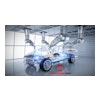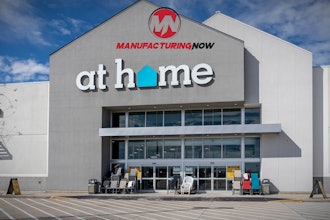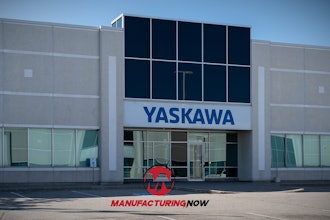On July 5, 2020, at about 2:50 a.m., the Atlantic Huron, a 736-foot-long self-unloading bulk carrier, struck a pier in the Soo Locks in Michigan.
Luckily, no one in the 25-person crew was injured, but the accident caused $2.2 million in damage and triggered a National Transportation Safety Board investigation. The accident was traced back to a single screw.
According to the NTSB, as the Atlantic Huron approached the locks, the crew tried to slow the vessel down, but a problem with the controllable pitch propeller (CPP) system caused the ship to increase speed instead of slowing down, hitting the pier at 6.8 knots — about 8 mph. It seems small, but if you've ever been on a boat that comes in hot to the pier, you can do a lot of damage even at low speeds — of course, my experience is with a mid-size pontoon boat and not a ship that weighs 36,920 metric tonnes. The vessel was moored, but the Atlantic Huron suffered more than $1.6 million in damage and the pier sustained about $573,000.
The NTSB investigation found that the crash was caused by a maintenance error and the incorrect installation of a single set screw. There's a reason they tell you to follow the manufacturer’s requirements, no matter how simple they seem.
Blades in a controllable pitch propeller aren't fixed in position — rather, they are fastened to the hub in a way that allows them to rotate and change pitch. The blade pitch determines the vessel’s speed and direction.
NTSB investigators traced the problem back to a small set screw that was installed in the piece of the controllable pitch propeller that controls pitch. According to maintenance records, the set screw was last removed and reinstalled more than four years before the accident. So it's not really on the current crew.
Over the course of the investigation, technicians found no evidence that any manufacturer-required thread-locking fluid had been applied. As a result, the set screw backed out, beginning a series of mechanical failures that resulted in the ship moving ahead and increasing speed when it was supposed to be doing the opposite.
The investigation also found that the crew was improperly trained on how to respond to a loss of propeller pitch control. The NTSB suggested that better training and documentation could've helped the crew react more quickly to the situation.
The Atlantic Huron reached 7.1 knots before the captain cut the engine and dropped the anchors. Despite their efforts, they still caused quite the collision.
The ship was built back in 1984 and is owned by CSL Group, operated by V Ships Canada.
$2.2 million in damage — all because they didn't use Loctite.






















